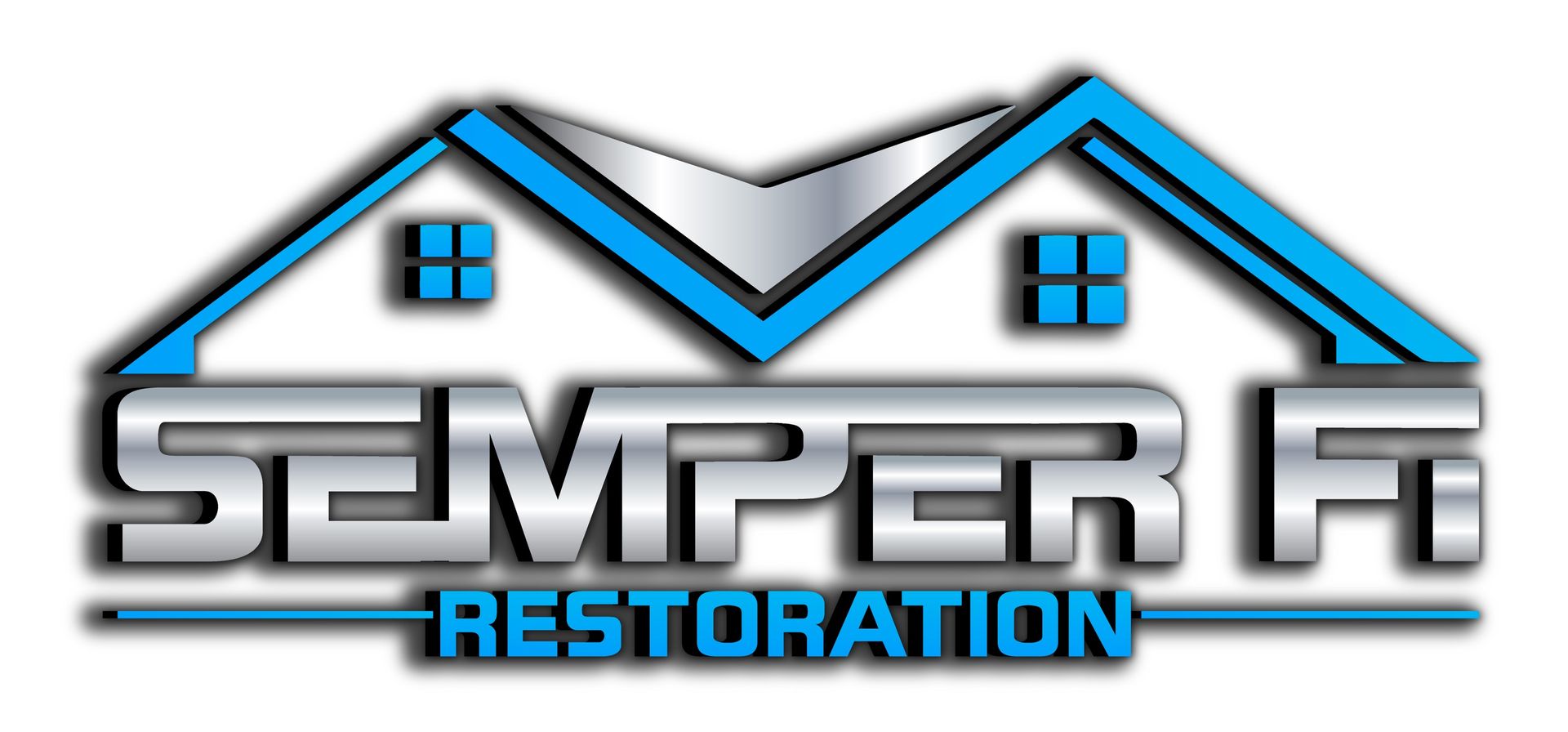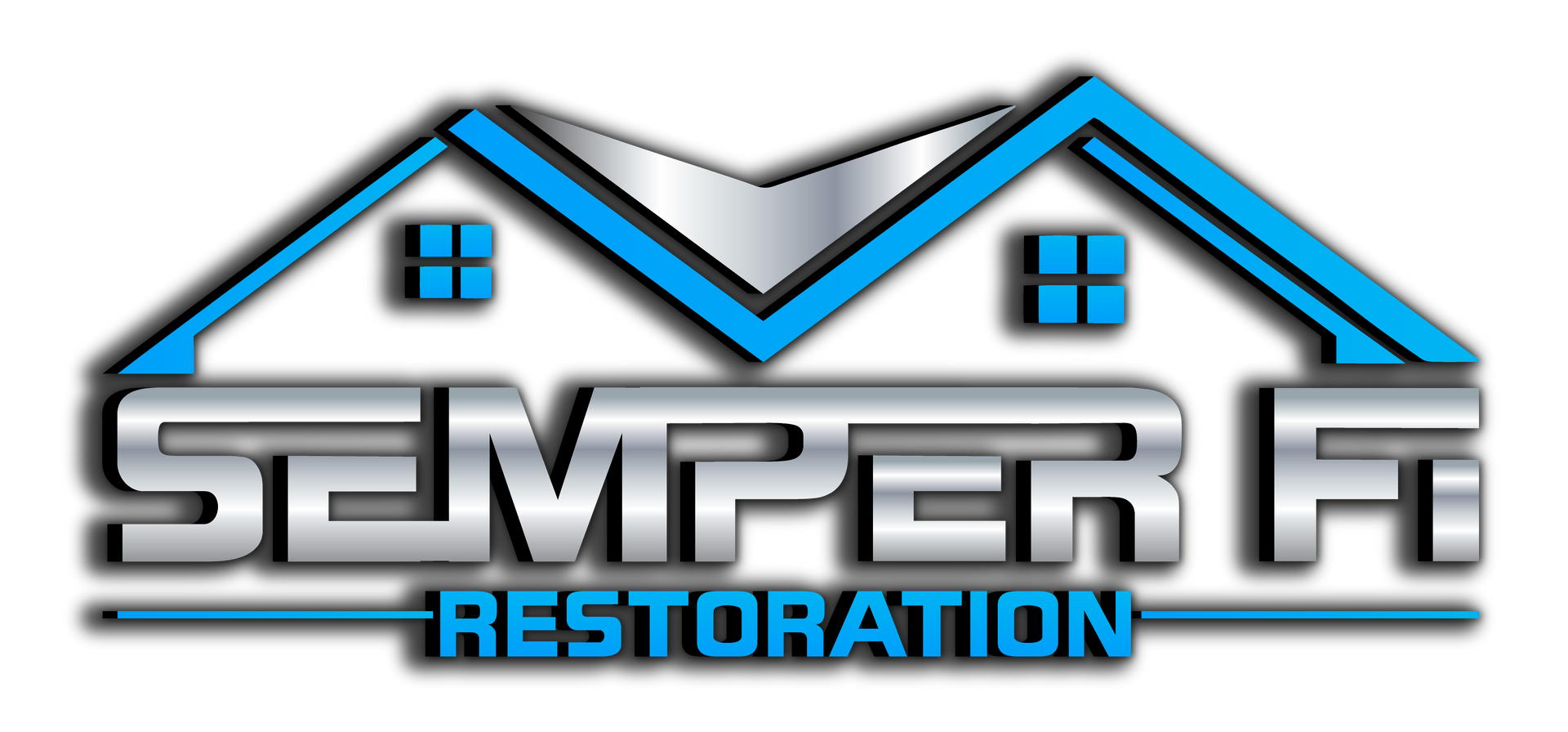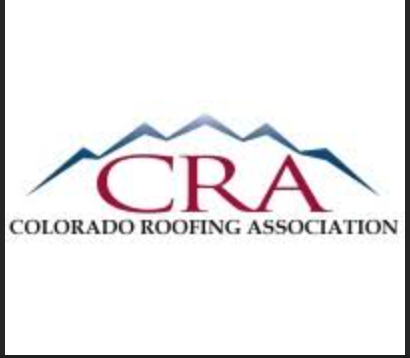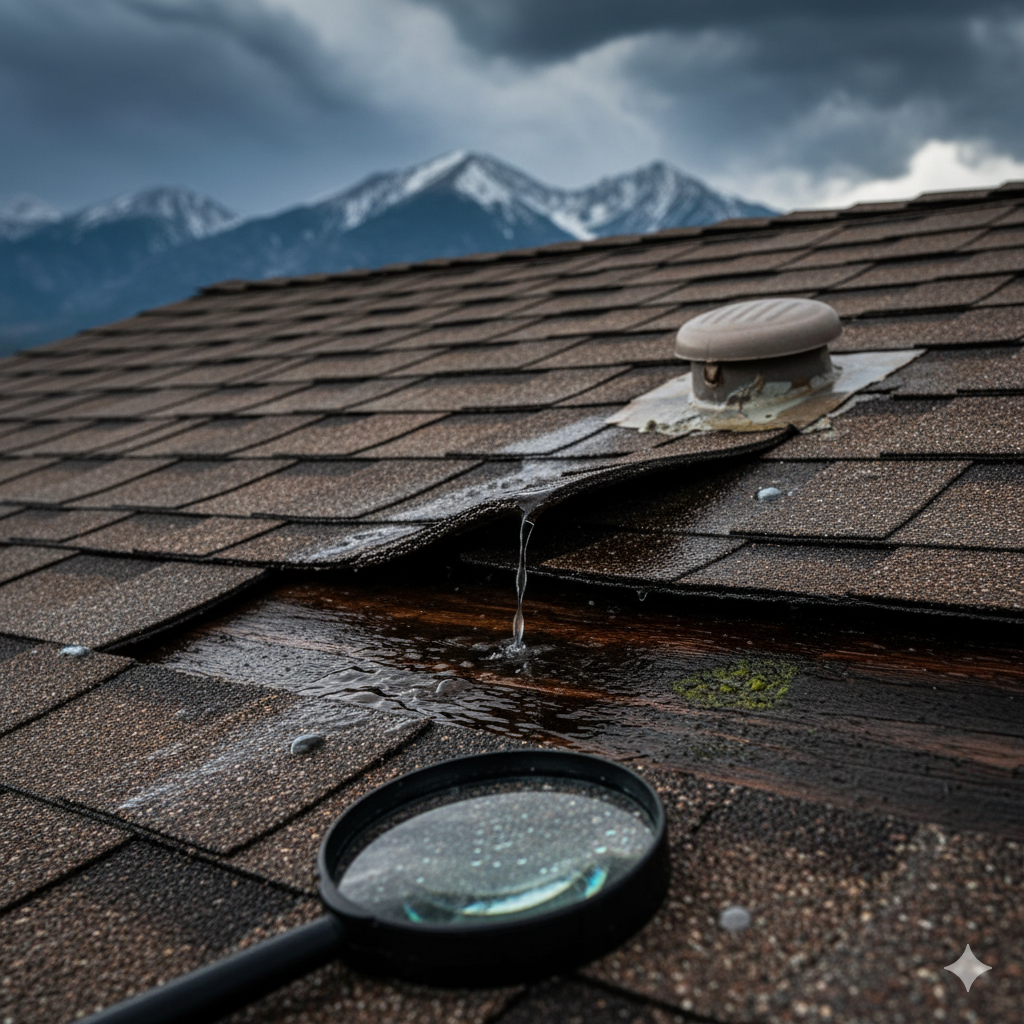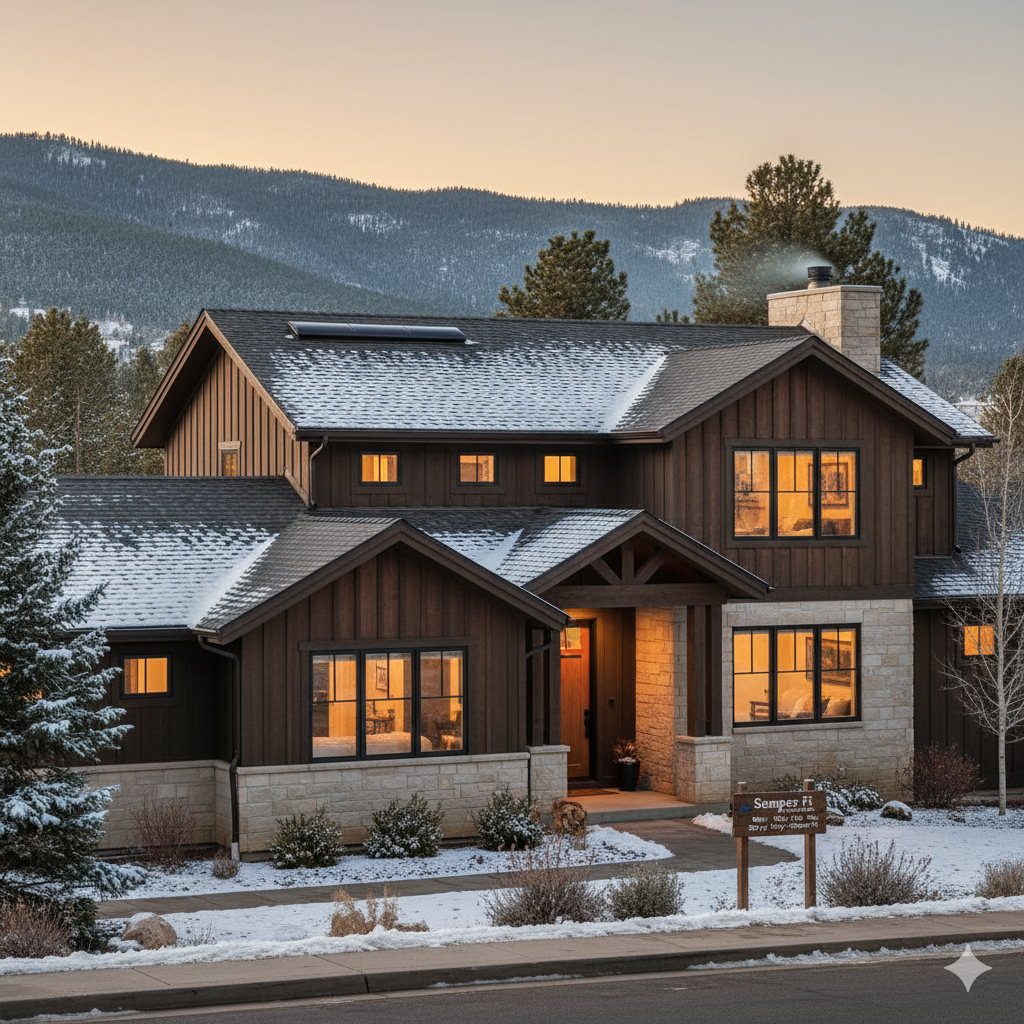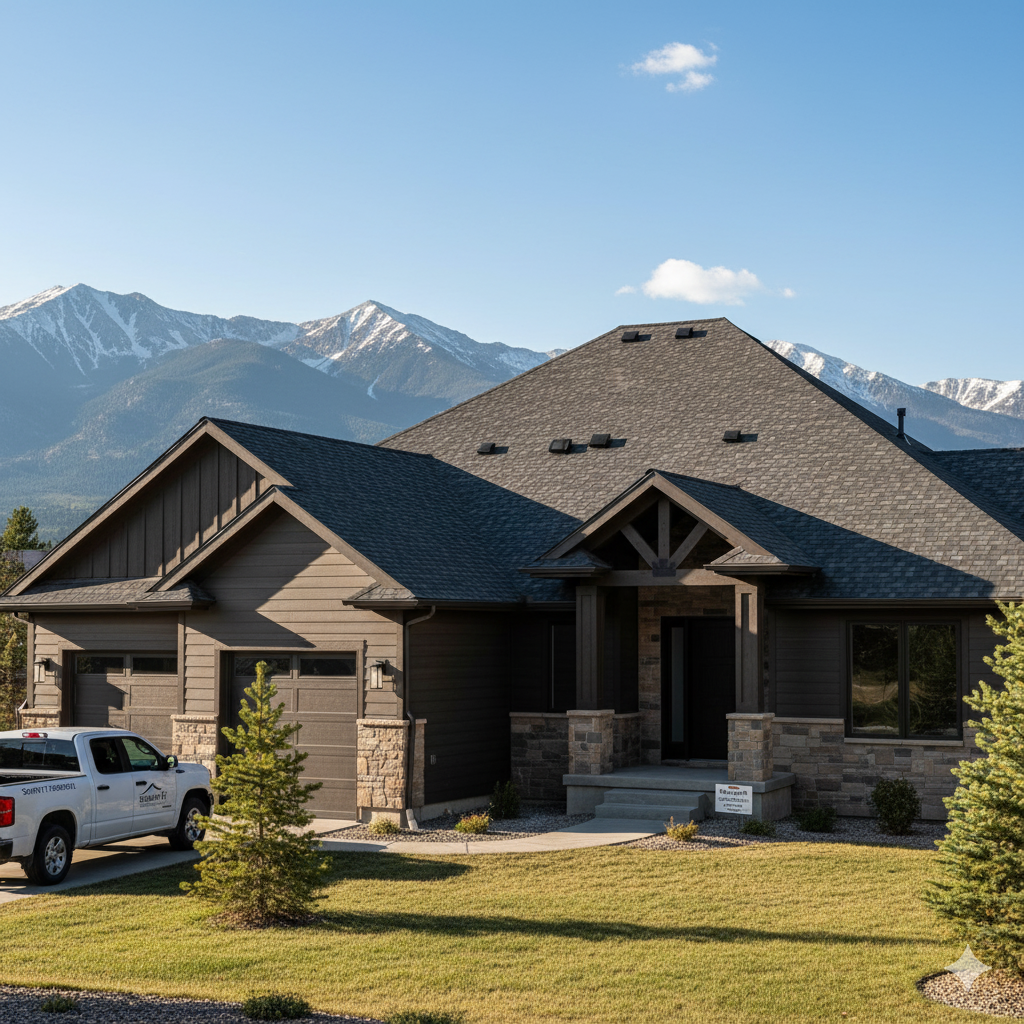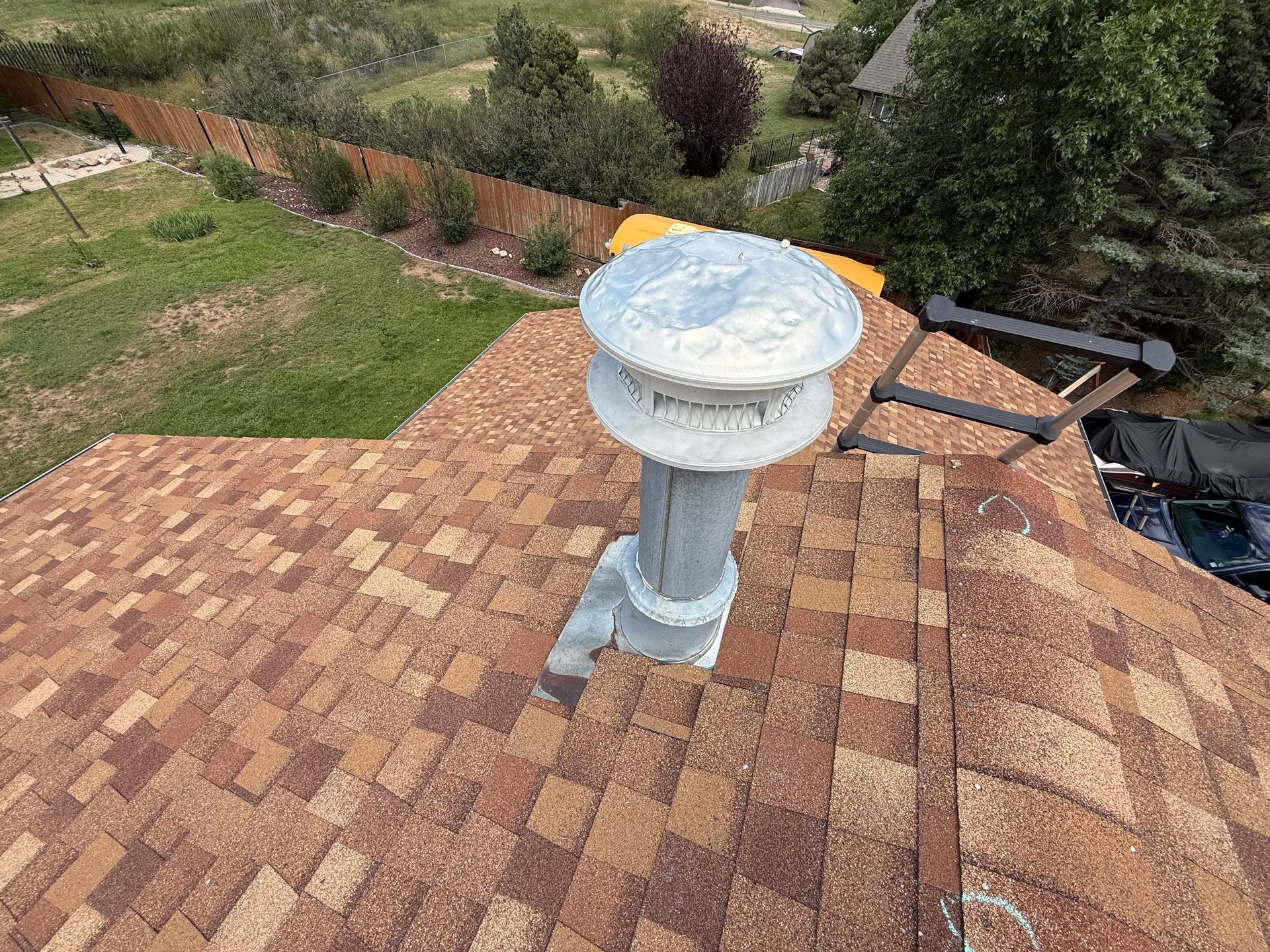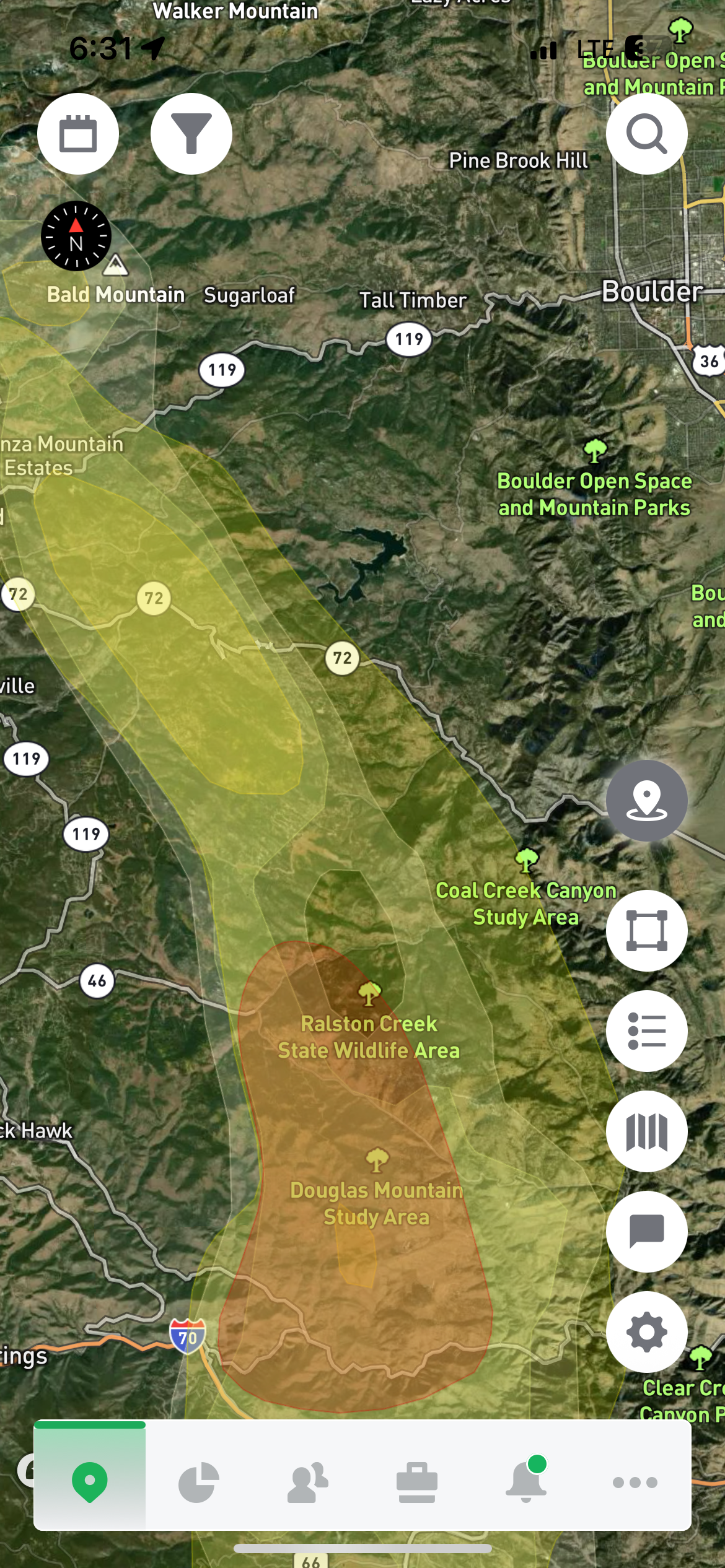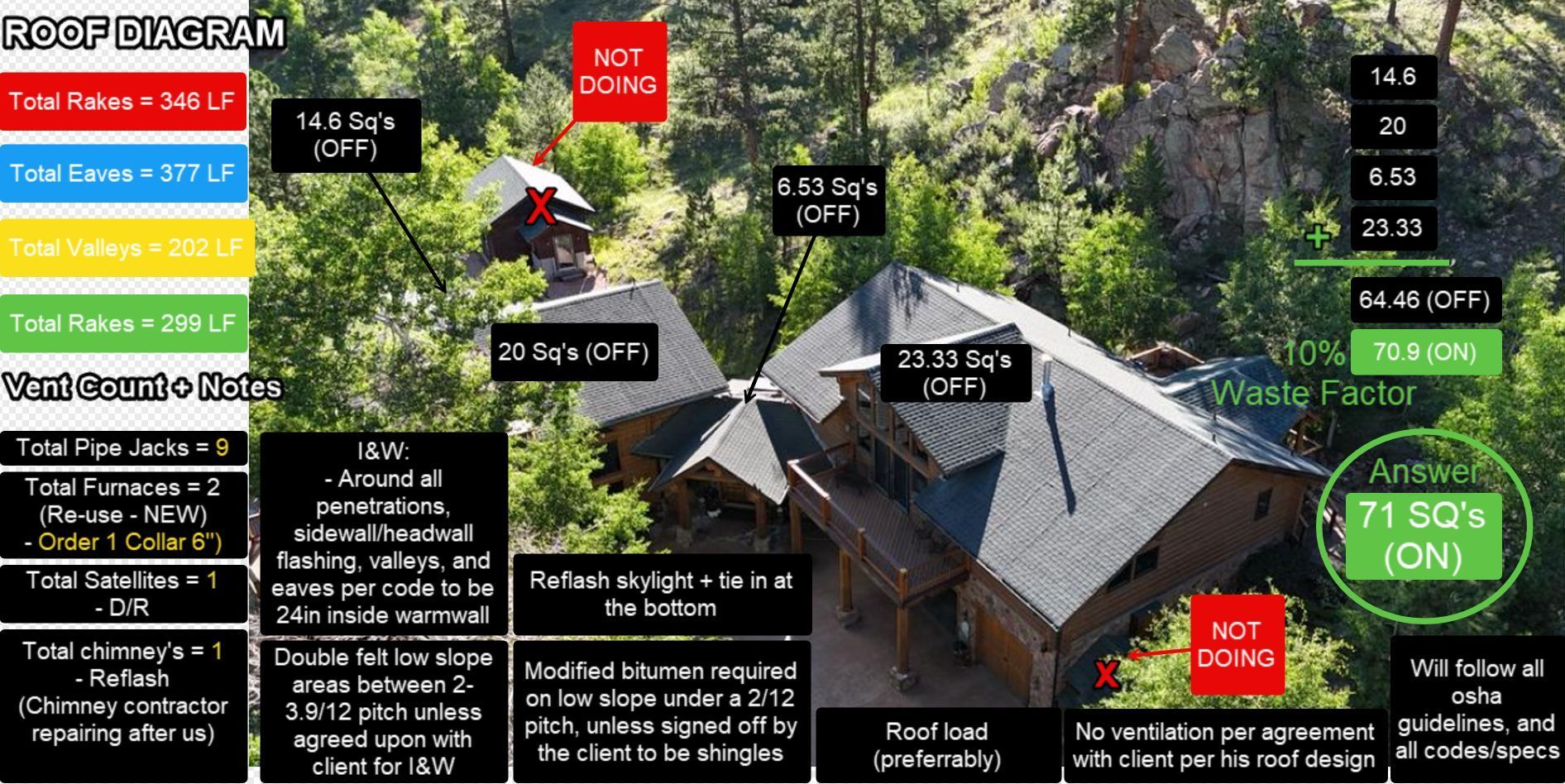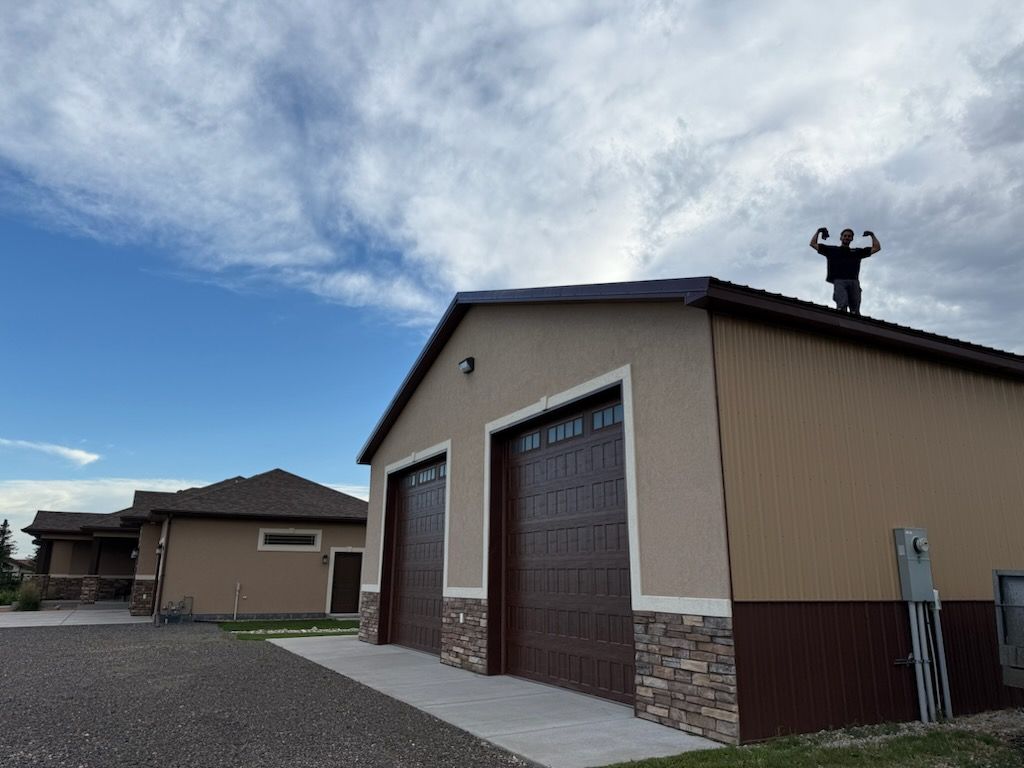7 Things To Look For In A Local Roof Repair Company
Josh Bosley • June 7, 2025
TL;DR Selecting a reliable local roof repair company, particularly in Colorado's unpredictable climate, is crucial for protecting your home. Key considerations include verifying proper licensing and comprehensive insurance, which safeguard against liability and ensure code compliance. Homeowners should seek contractors with extensive, specialized roofing experience and a stellar reputation, evidenced by genuine customer reviews and industry accreditations. A top-tier company offers a full range of services, from minor fixes to complete replacements, and possesses in-depth knowledge of local climate patterns and building codes. Transparency in communication is paramount, demanding free, detailed assessments, clear written estimates, and consistent project updates. Furthermore, insist on high-quality, durable materials and superior craftsmanship, supported by robust manufacturer and workmanship warranties. Finally, a reputable roofer adheres to strict safety standards, including OSHA compliance and thorough worker training, minimizing risks. Comparing multiple detailed quotes and asking targeted questions about processes and guarantees will ensure an informed decision for a lasting repair.
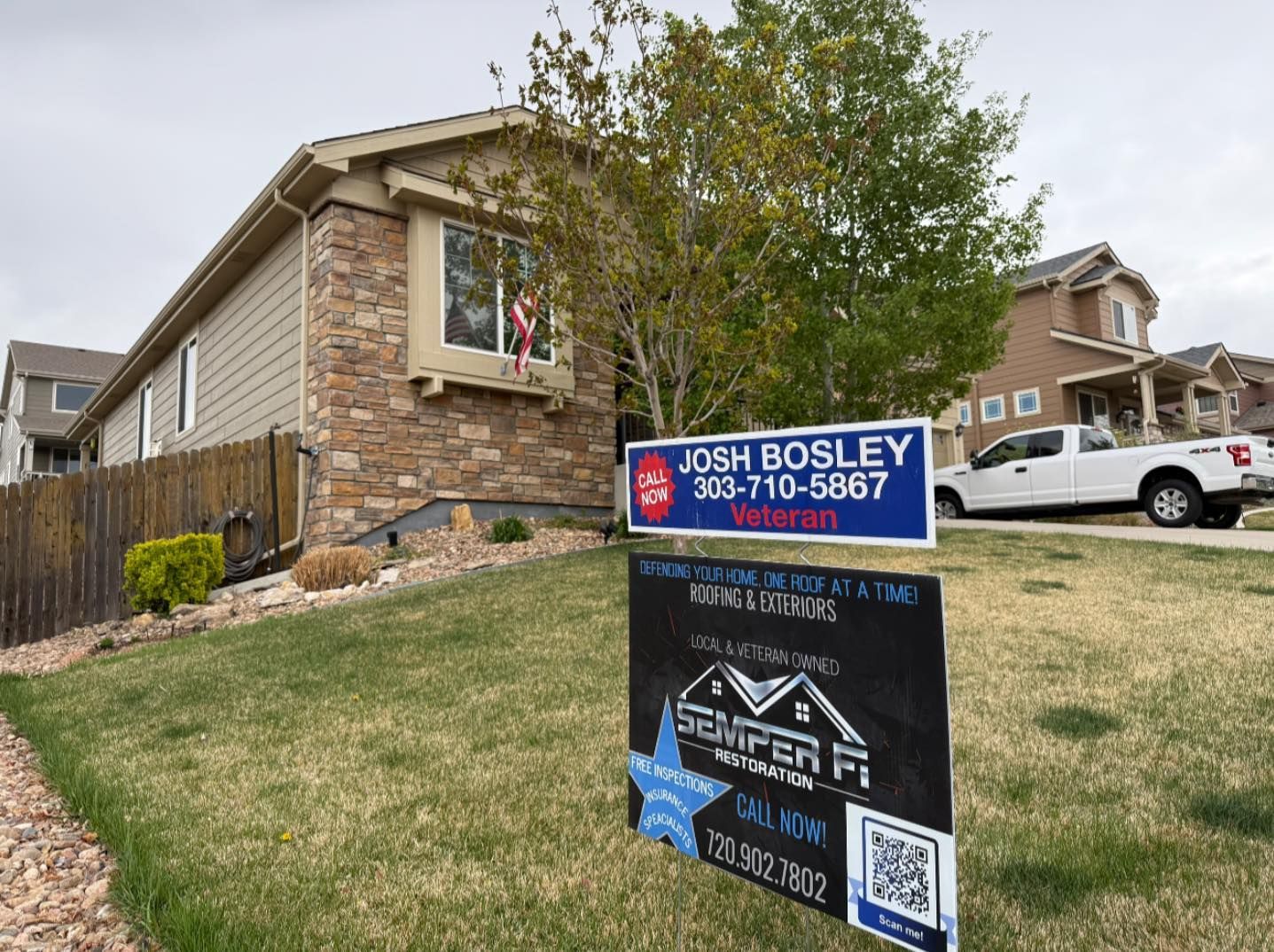
7 Suggestions on What to Look for in a Roof Repair Company
A sudden hailstorm rolls through your neighborhood, and the next morning, you spot a few battered shingles scattered on your lawn. Maybe it’s not a storm—maybe it’s just the first sign of a small leak in the attic after a rainy night. Either way, the stress sets in: your home’s roof is compromised, and the clock is ticking. In Colorado’s unpredictable climate, delaying repairs isn’t an option—and neither is choosing the wrong contractor.
The right local roof repair company does more than patch up the obvious damage. They safeguard your home’s structure, prevent expensive water issues down the road, and help you make the most of your homeowner’s insurance. But with so many companies advertising quick fixes, how can you tell which one will truly deliver reliable results and peace of mind?
This guide unpacks the seven essential qualities every homeowner should demand from a local roof repair company. From licensing and insurance to craftsmanship, communication, and beyond, you’ll find practical tips and insider checkpoints to help you make a confident, informed hiring decision. Let’s make sure your next roofing project is handled by a team that values your home as much as you do.
1. Ensure Proper Licensing and Insurance
When it comes to roof repairs, licensing and insurance aren’t just paperwork—they’re your primary safeguards against shoddy work, liability headaches, and code violations. Before you schedule any on-site inspection, make sure your chosen contractor holds all the proper credentials. That way, if something goes wrong—an unexpected code violation, an on-the-job injury, or a disputed warranty—you won’t be left footing the bill.
Local Licensing Requirements & Colorado DORA Verification
Colorado doesn’t issue a statewide roofing license. Instead, each city or county—Brighton, Denver, Thornton, Longmont, and others—sets its own permitting requirements. Here’s how to verify a contractor’s standing:
- Visit the Colorado Department of Regulatory Agencies’ license lookup tool.
- Enter the contractor’s name or business license number.
- Review any active or expired licenses for regulated trades (electrical, plumbing, contractor).
- Note any disciplinary actions or outstanding fines.
- Next, call or visit your local building department to confirm the roofer is approved for permit pulls in your municipality.
Verifying both DORA and local records takes only a few minutes—but it can save you from unpermitted work, failed inspections, and costly tear-outs down the road.
Insurance Coverage and Bonding Requirements
A reputable roofer should carry at least:
- General Liability Insurance: Typically $1 million per occurrence, $2 million aggregate, to cover property damage and third-party injuries.
- Workers’ Compensation Insurance: Required by Colorado law for any business with employees, so you’re not on the hook if a crew member is hurt on your roof.
- Surety Bonding: A bond protects you if the roofer doesn’t finish the job or fails to pay subcontractors. Bond amounts vary; look for coverage at least equal to your project estimate.
Always ask for a current Certificate of Insurance (COI) before any work begins. On the COI, verify policy numbers, coverage limits, and expiration dates. If anything looks off—expired dates, low coverage limits—request updated proof immediately.
Risks of Hiring Unlicensed or Underinsured Contractors
Skipping due diligence on licensing and insurance can lead to:
- Code Violations & Stop-Work Orders: Unpermitted roofing can trigger fines or force you to redo the entire job.
- Homeowner Liability: Without workers’ comp, you could be sued for on-site injuries.
- Denied Insurance Claims: Your insurer may refuse to cover storm damage if unrepaired by a licensed professional.
- Subpar Workmanship: Unlicensed contractors often cut corners, leading to leaks, mold, and structural rot.
- Costly Re-repairs: Fixing a botched roof job can cost two or three times the original quote.
Always get written proof of license and insurance. Check that documentation against official records—and don’t hesitate to walk away if something doesn’t add up.
2. Evaluate Experience and Reputation
Not all roofers are created equal. A contractor’s track record and area of expertise can make or break your project—especially when dealing with hail-damaged shingles or complex leak repairs. Before you let anyone near your roof, take a close look at how long they’ve been in business, whether they focus on roofing (rather than general handyman work), and what real customers say about their work. These indicators will help you choose a team that can troubleshoot unexpected issues, navigate insurance claims, and deliver a roof that lasts.
Years of Specialized Roofing Experience
Roofing is a nuanced trade. Installing underlayment, matching shingle profiles, and aligning flashing all require training that only comes with time and repetition. When you ask a contractor, “How long have you been doing roof repairs?” don’t settle for a vague “over 10 years in construction.” Drill down:
- Look for companies with at least a decade of storm-driven roofing work. Frequent hail and wind events in Northern Colorado demand refined processes for inspection, claim documentation, and repair techniques.
- Ask about the volume of similar projects they complete each year. A roofer who handles dozens of hail-damage jobs every season will have more insight into the latest impact-resistant products and best practices.
A business that’s been fixing roofs in Brighton, Thornton, or Longmont for years has likely weathered supply-chain shocks, code changes, and tricky insurance negotiations—experience that pays off when your shingles are on the line.
Roofing Specialist vs. General Contractor or Handyman
When it comes to urgent roof repairs, a true roofing specialist can outpace general contractors or handypeople in several key areas:
• Roofing Specialist
– Deep Expertise: Dedicated tools for moisture scans, infrared thermography, and precise shingle matching
– Faster Response: Teams often prioritize roof emergencies after storms, knowing the high demand
– Stronger Warranties: Access to manufacturer-backed product warranties and in-house workmanship guarantees
• General Contractor
– Broad Skill Set: Can handle interior and exterior projects but may subcontract roofing work
– Moderate Availability: Roofing is one of many services, so scheduling can take longer
– Mixed Warranties: Relies on subcontractor warranties, which can complicate follow-up service
• Handyman
– Small Repairs Focus: Best for minor caulking or gutter cleanouts, not full shingle repairs
– Limited Roof Tools: Often works with basic ladders and ladders-only safety gear
– No Manufacturer Guarantees: Unlikely to hold shingle warranties or offer trained crews
Choosing a dedicated roofer means you’re hiring someone who lives and breathes the intricacies of shingles, vents, and underlayment—critical when hail bruises granules or wind lifts a ridge cap.
Checking Customer Reviews, Accreditations, and Awards
Social proof and industry badges tell you whether a contractor walks the talk. Here’s how to vet their reputation:
- Scan review platforms. Read both Google and Yelp reviews, looking for detailed accounts of communication, timeliness, and cleanup. On the BBB website, note not just star ratings but any unresolved complaints.
- Identify red flags. Beware companies that have 5-star reviews written on the same day or with identical language—these are signs of paid or fake testimonials.
- Look for industry accreditations. GAF Master Elite, CertainTeed Select ShingleMaster, or local trade association memberships signal a higher level of training and product knowledge.
- Ask for references. A reputable roofer should be able to provide recent homeowner contacts who permitted you to see the finished work.
By combining firsthand feedback with credible seals of approval, you’ll gain confidence that the contractor you choose has a proven history of high-quality roofing repairs and installations.
3. Confirm a Comprehensive Range of Roofing Services
Many roof repair companies offer only a narrow set of fixes—patching a leak here, swapping a shingle there. But your home is more than a single problem spot. When you partner with a roofer who delivers a full lineup of services—from minor repairs to complete replacements and even complementary exterior work—you save time, reduce coordination headaches, and get a seamless end result. Here’s what to look for when evaluating a company’s service breadth:
Types of Roof Repair Services
A well-rounded repair specialist should handle all the usual suspects—and spot the subtler issues too:
- Leak patching and flashing repairs that stop active drips before they turn into rot
- Shingle replacement for cracked, missing, or curling tabs
- Hail damage restoration, including granule loss patch-ups and bruise repairs
- Underlayment fixes to seal gaps and reinforce the roof deck
Beyond these core repairs, check whether the company inspects ventilation, fascia, and soffit conditions in the same visit. Addressing hidden damage up front prevents follow-on repairs and keeps your roof in top shape after the crew leaves.
Roof Replacement and New Installations
Sometimes patchwork can only do so much. A contractor who also specializes in full roof replacements and new installations will guide you through every option:
- Complete tear-off down to the deck for a fresh start
- Licensed overlays when code and decking condition allow
- Asphalt, metal, or tile systems matched to your home’s design and Colorado’s freeze-thaw cycles
Before you sign on the dotted line, confirm the installer is manufacturer-approved. That credential unlocks enhanced warranties—often 30 years or more—and proves the crew has completed rigorous training and quality audits.
Additional Exterior Services
Your roof is only one part of your home’s protective shell. A company that offers bundled exterior services can streamline scheduling, unify warranties, and maintain a cohesive look:
- Seamless gutter installation and repair to manage runoff
- Siding replacement or repair for improved insulation and curb appeal
- Exterior painting that refreshes your home’s façade
- Energy-efficient window installations to lower heating and cooling costs
Bundling these tasks under one roof (pun intended) means fewer subs on site, consistent workmanship standards, and often a better overall price. Plus, with a single point of contact, there’s no risk of dropped details between contractors.
Choosing a local roofer with this full spectrum of services gives you one partner to lean on for every exterior need—keeping your home protected, efficient, and looking its best through every Colorado storm.
4. Look for Local Climate and Code Expertise
A roofer’s skill set shouldn’t start and stop with nailing shingles. In Colorado—where hailstorms can pelt your roof one week and heavy snow can pile up the next—the right local contractor understands the region’s specific weather challenges and knows how to keep your repairs fully compliant with municipal rules. That local know-how not only makes for a sturdier roof but also avoids costly delays when inspections and permits come into play.
Knowledge of Colorado Hail and Storm Damage Patterns
Colorado ranks among the nation’s top hail zones, and repeated impacts can hide damage that only an experienced eye will catch. A seasoned local roofer knows to look for:
- Bruised granules or small “dimple” marks that signal underlying shingle cracks
- Early-stage granule loss—often visible as dark streaks on flashing or in gutters
- Subtle deck warping from repeated freeze–thaw cycles
By spotting these signs, a climate-savvy contractor can recommend targeted repairs before leaks or rot spread. Their familiarity with local storm patterns also means they’ll suggest impact-resistant materials and techniques proven to hold up under Colorado’s unique hailstones and high-altitude sun exposure.
Compliance with Local Building Codes and Permit Processes
Every Denver suburb has its own tweaks to the international building code. Brighton, Thornton, Longmont, Lakewood—they each set permit fees, setback requirements, and roof-pitch thresholds that affect how and when work can proceed. A contractor lacking local code expertise risks permit rejections, failed inspections, or even having to tear off newly installed materials.
Look for a roofer who:
- Pulls all required permits on your behalf—no waiting in line at the city offices.
- Knows inspection checkpoints for flashing, underlayment overlaps, ventilation, and eave protection.
- Keeps up with code updates, like new wildfire or storm-resistant mandates.
With those boxes checked, your project moves smoothly through plan review and final sign-off, protecting you from fines and ensuring your roof stands up to future audits.
Relationships with Local Suppliers and Regional Material Preferences
In Colorado’s supply-chain climate, timing matters as much as price. A roofer who’s built strong ties with area distributors often scores first dibs on impact-rated shingles, specialized underlayments, and ice-and-water shields formulated for freeze-thaw resilience. That insider access means:
- Faster procurement when a storm creates a surge in demand
- Bulk discounts you wouldn’t get ordering directly as a homeowner
- Expert recommendations on products proven to perform in your ZIP code
Plus, contractors who regularly source from local stock tend to have fewer backorders and scheduling hiccups—so your repair happens on time and with the right materials for a Colorado-tested roof.
5. Prioritize Customer Communication and Transparency
When your roof is on the line, guesswork has no place. A contractor who communicates clearly and openly from the first call to the final walk-through keeps your project on track—and spares you the headache of hidden costs or cloudy timelines. Look for a local roof repair company that treats every conversation as an opportunity to build trust, answer questions, and keep you in the loop.
Free Roof Assessments and On-Site Inspections
A no-cost, no-obligation roof inspection shows you where your home really stands. The best contractors arrive equipped with moisture meters, drone cameras, and digital tablets to record every bruise, crack, or loose shingle. They’ll snap high-resolution photos, mark suspect areas, and deliver a concise, written condition report so you can see the evidence for yourself.
During the walkthrough, pay attention to how the inspector explains what they’re seeing. Do they point out both obvious and subtle issues? Can they demonstrate how hail impact differs from normal wear? A transparent on-site assessment gives you the information you need to decide if a simple patch or a larger repair is right for your home.
Detailed Written Estimates and Transparent Pricing
Once the inspection is wrapped up, a reliable roofer provides a line-item estimate that breaks down:
- Material costs (shingles, underlayment, flashing)
- Labor hours and crew size
- Permit and inspection fees
- Waste disposal or dumpster rental
This granular pricing lets you compare apples to apples when you gather three or more bids. If one quote lists a single lump sum for “roof repair,” it’s tough to know what’s covered—and what surprises could pop up later. A fully transparent estimate means no last-minute add-ons and fewer billing disputes once the project starts.
Project Timelines, Progress Updates, and Change Management
A clear start date is only half the battle. Your roofer should outline a realistic schedule, from demolition to final shingle installation, with milestones for tear-off, decking repairs, and quality inspections. Whether they text you daily progress photos or send weekly email summaries, regular updates help you spot potential delays—like weather or supply issues—before they derail your plan.
Every project may need tweaks along the way. That’s why a formal change order process is key. If you decide to upgrade to impact-resistant shingles mid-job or discover unexpected wood rot, a change order documents revised costs, new timelines, and any permit adjustments. With written approvals in hand, you avoid communication breakdowns and ensure everyone stays on the same page.
By insisting on proactive communication and iron-clad transparency, you’ll find a roofing partner who values your time, budget, and peace of mind—no surprises, no excuses.
6. Insist on High-Quality Materials and Craftsmanship
Roof longevity and performance hinge on choosing the right materials and having a skilled team install them. Cutting corners on shingles or skimping on proper techniques might save you a few bucks up front, but it often leads to leaks, premature wear, and costly repairs down the road. Here’s what to look for when evaluating a contractor’s approach to materials and workmanship.
Selecting Durable Roofing Materials and Trusted Brands
Not all shingles are created equal—especially in hail-prone areas. Impact-resistant Class 4 shingles, like GAF Timberline HDZ or CertainTeed Landmark, are engineered to withstand Colorado’s hailstorms and harsh UV exposure. These products often carry extended warranties and boast features such as:
- High hail-impact ratings that resist bruising and granule loss
- Fade-resistant color technology to maintain curb appeal
- Enhanced algae resistance for cleaner-looking roofs
- Energy-efficient options with reflective coatings to reduce heat absorption
Ask your contractor which brands they install most frequently and why. A roofer committed to quality materials will explain life-expectancy differences, performance benchmarks, and how certain underlayments or ice-and-water shields add an extra layer of protection in vulnerable zones like eaves and valleys.
Skilled Technicians and Installation Best Practices
Even the top-tier shingle won’t perform if it’s not installed correctly. Look for a company that follows industry best practices, including:
- Full underlayment coverage with synthetic or rubberized membrane in high-risk areas
- Proper nail placement and quantity—typically four to six nails per shingle, following manufacturer guidelines
- Adequate attic ventilation to balance temperature and moisture, preventing warping and premature aging
- Precision flashing around chimneys, vents, and skylights to seal joints and direct water away from the deck
- Ice-and-water shield in eaves, valleys, and rakes to stop wind-driven rain and ice dams before they cause damage
During your free assessment, ask the inspector to walk you through these practices. A professional crew will have checklists, demonstrate their tools, and show examples of previous work that highlight meticulous detail.
Manufacturer Warranties and Workmanship Guarantees
A strong warranty package is your safety net if problems crop up later. There are two distinct layers:
- Material Warranties: Backed by the shingle manufacturer, these cover product defects—often 25 to 50 years for premium lines. Higher-end warranties may include prorated coverage or even non-prorated full replacement for a set period.
- Workmanship Guarantees: Offered by your contractor, these protect against installation errors. Reputable roofers usually provide 5 to 10 years of coverage, with options to extend.
Before signing, verify both warranties in writing. Ensure the material warranty is transferable, should you sell your home. And confirm the workmanship guarantee includes details on response time, scope of coverage, and any maintenance requirements. This documentation keeps everyone accountable and ensures you won’t absorb unexpected costs.
By prioritizing quality materials and proven installation techniques—and locking in rock-solid warranties—you’ll end up with a roof built to last through Colorado’s toughest seasons.
7. Verify Strict Safety Standards and Compliance
A rigorous safety program isn’t just about checking boxes—it’s the backbone of any professional roofing operation. When crews follow established protocols, you avoid damage to your home, reduce the likelihood of costly delays, and protect everyone on the jobsite. As you interview local roof repair companies, make sure they can demonstrate a robust safety culture, backed by reputable standards and documented procedures.
Prioritizing safety also shields you from liability. If a worker is injured on your property and the contractor lacks proper fall protection or training, you could find yourself entangled in legal or insurance complications. By insisting on strict safety compliance from the start, you ensure your project runs smoothly, stays on schedule, and wraps up without unexpected financial or legal headaches.
Understanding OSHA Fall Protection Requirements
OSHA has clear rules for residential fall protection whenever workers are six feet or more above a lower level. Contractors should be well versed in these standards and able to show you how they apply to your roof. Key requirements include:
- Guardrail systems around exposed edges
- Safety nets positioned under work areas
- Personal Fall Arrest Systems (PFAS) when guardrails or nets aren’t practical
For a deeper look at OSHA’s guidance, contractors should reference the official resource: https://www.osha.gov/residential-fall-protection/guidance. By adhering to these regulations, roofers minimize the chance of falls—and keep your liability risk to an absolute minimum.
Use of Personal Fall Arrest Systems and Site-Specific Plans
When traditional guardrails or nets can’t be installed—common on sloped roofs—PFAS becomes essential. A complete PFAS setup includes:
- A full-body harness
- Shock-absorbing lanyard or self-retracting lifeline
- Secure anchor point rated for fall arrest
Beyond the equipment itself, OSHA requires a written site-specific fall protection plan if conventional methods aren’t feasible. This plan outlines how the crew will install, inspect, and adjust PFAS components throughout your project, adapting to changing roof angles or unexpected obstructions. A contractor who proactively develops and shares this plan demonstrates a commitment to safety that goes far beyond industry minimums.
Worker Training, Protective Equipment, and Competency Verification
Even the best gear means little without qualified crews. Verify that your roofer conducts:
- Documented fall protection training by a qualified “competent person”
- Regular equipment inspections, replacing any worn harnesses or lanyards
- Onboarding safety orientations before work begins
In addition to PFAS, crews should use complementary personal protective equipment—helmets, non-slip boots, high-visibility vests, and eye protection—and follow safe ladder protocols. Ask to see proof of training records and equipment inspection logs. A team that can’t produce up-to-date documentation may be cutting corners, putting both their workers and your home at needless risk.
By insisting on these safety measures, you’ll partner with a roofing company that values professionalism, quality, and the well-being of everyone on your property. No matter how complex the repair, a zero-compromise approach to safety ensures a job done right and a home left intact.
8. Bonus Tip: How to Compare Roof Repair Quotes
Getting several bids is smart—but making sense of different numbers and line items can feel like decoding a foreign language. A structured approach helps you spot the best value rather than just the lowest price. Below are three key steps for comparing quotes side by side so you can choose a contractor who offers quality work at a fair cost.
Breaking Down Typical Cost Ranges
Roof repairs vary widely depending on the damage’s severity:
- Minor Repairs($300–$1,500): Small leak patches, a handful of shingle replacements, simple flashing fixes.
- Moderate Repairs($1,500–$3,000): Larger areas of granule loss, several dozen missing shingles, minor underlayment sections.
- Major Repairs($3,000–$6,000+): Extensive hail restoration, deck replacement, structural repairs to sheathing and framing.
These industry averages come from Monarch Roofing’s cost guide ( https://monarchroofing.biz/roof-repair-cost/ ). Keep in mind that local labor rates, material brand choices, and emergency call-outs (after severe hailstorms) can push you toward the higher end of each range.
Calculating Cost Per Square Foot and Roof Complexity
To normalize quotes of different sizes, calculate each bid’s cost per square foot:
cost_per_sq_ft = total_quote_amount / roof_square_footage
This figure helps you compare apples to apples. A 2,000 sq. ft. roof with a $6,000 quote works out to $3.00 per sq. ft. But remember, not all roofs are created equal. Factors that can drive up your cost per square foot include:
- Steep pitches that require additional safety gear and tie-offs
- Multi-story homes where material hoisting and ladder placement are more involved
- Specialty materials like Class 4 impact-resistant shingles or designer tiles
- Hidden structural issues—rot, warped decking, or poor ventilation—that require extra labor
If one contractor’s per-square-foot rate seems unusually low, double-check that they’re factoring in all the same elements as the others.
Identifying Hidden Fees and Comparing Scope of Work
Even the clearest bid can hide fees in the fine print. Watch out for:
- Permit Fees: Some contractors include this in the base price, others list it separately.
- Dumpster or Debris Haul-Off: Will they remove waste daily or lump it into a final “cleanup” fee?
- Disposal Charges: Some landfills levy extra per-ton fees for old shingles.
- Structural Repairs: Look for explicit line items if damaged decking or framing is part of the plan.
To make a true apples-to-apples comparison, ensure each quote covers identical tasks and materials. Create a side-by-side spreadsheet with columns for every line item—materials, labor, permits, cleanup—so you can spot missing services or unexpected add-ons. If something isn’t clear, ask the contractor to revise the estimate or provide a detailed written explanation. That level of transparency is a good sign you’re dealing with a trustworthy local roof repair company.
9. Bonus Tip: Essential Questions to Ask Before Hiring
Before you sign on the dotted line, make sure you’re armed with the right questions. A contractor’s answers will reveal how thorough—and transparent—they really are. Use the prompts below to guide your conversations and compare responses from multiple companies.
Questions on Licenses, Insurance, and Certifications
-
“Can you provide copies of your general liability and workers’ compensation certificates?”
Request to see a current Certificate of Insurance (COI) listing policy numbers, coverage limits (ideally $1 million per occurrence), and expiration dates. -
“Are you licensed or permitted to pull roofing permits in my city/county?”
Confirm they’ve verified compliance with local requirements—Brighton, Denver, Thornton, etc.—and have a clean record in DORA’s database. -
“What manufacturer certifications or industry accreditations do you hold?”
Look for badges like GAF Master Elite or CertainTeed Select ShingleMaster. These demonstrate extra training, quality audits, and access to enhanced warranties.
Questions on Project Process, Cleanup, and Timeline
-
“What is your estimated start date and project duration?”
Nail down a realistic schedule, taking into account weather windows and permit turnaround times. A clear timeline helps you plan around family activities or events. -
“How do you manage daily site cleanup and final debris removal?”
Ask whether they provide a dedicated dumpster, how often they haul off waste, and what steps they take to protect landscaping and gutters. -
“What’s your change order process if we discover additional damage?”
Good contractors outline how they handle scope adjustments: written approvals, revised estimates, and updated timelines—no surprises later.
Questions on Insurance Claims Assistance and Payment Terms
-
“Do you assist with insurance documentation and adjuster meetings?”
Storm damage jobs often require photo reports, line-item estimates, and a knowledgeable advocate who can walk an adjuster through hail impact or decking repairs. -
“How much deposit do you require, and when are subsequent payments due?”
Reasonable down-payments typically stay under 30% of the total. Confirm payment milestones align with specific project phases—demolition, material delivery, final inspection. -
“What warranty or workmanship guarantee do you offer, and how is it documented?”
Material warranties come from the manufacturer; workmanship guarantees come from the contractor. Ensure you receive both in writing, with clear coverage periods and transferability clauses.
By asking these targeted questions, you’ll quickly separate confident, well-organized roofers from those who leave too many details to chance. When everyone’s on the same page, you can move forward with peace of mind—knowing your repair is backed by transparent policies and professional accountability.
Putting Your Roof Repair Plan into Action
With a clear picture of what makes a top-notch roofing contractor, it’s time to turn your strategy into action. By following three simple steps, you’ll move from research to results—and ensure your roof repair is handled by the right local team.
-
Shortlist Your Top Candidates
Review the contractors who met your criteria for licensing, experience, and communication. Narrow the field to two or three companies that impressed you with transparent estimates, quality warranties, and local code expertise. -
Compare Detailed Quotes Side by Side
Lay each written estimate on the table—line items for materials, labor, permits, and cleanup—and calculate the cost per square foot. Look for consistency in scope and spot any hidden fees or scope gaps. This apples-to-apples comparison will reveal which bid delivers the best value. -
Schedule a No-Cost Roof Assessment
Finally, invite your preferred candidates to conduct a free, on-site inspection. Pay attention to how they document damage, explain repair options, and outline timelines. Their approach during this walkthrough often reflects how they’ll handle your entire project.
Ready to protect your home with confidence? Schedule your complimentary roof inspection with Semper Fi Restoration—our veteran-owned team is standing by to provide honest advice, thorough documentation, and swift service. Get your free roof inspection today and take the first step toward a more secure, long-lasting roof.
We'd love to do a complimentary roofing assessment for you!
